What is a Servo Press?
(Why Choose Closed-Loop Electric Servos vs Pneumatic or Hydraulic Press)
The actuation of cams, detents, and levers has long been the forte of pneumatic or hydraulic systems in machines. These systems are generally open loop. The only verification that the system has executed a command is the absence of an alarm signal as generated by some sensor (usually a mechanical or Hall-effect switch located near the mechanical stop). The speed at which events happen under open-loop control is dictated by physical factors such as mechanical friction and the amount of force the actuator generates. An adjustable mechanical stop usually sets the final position of an air cylinder.
Open-loop pneumatics are increasingly giving way to closed-loop servosystems. Closed-loop servos continuously monitor feedback from speed or position sensors as a means of controlling not just the distance actuators move, but also their speed and acceleration while they travel to their final destination.
There are many actuator types to consider when replacing a pneumatic system with a servo controlled system. Actuator types available include electric cylinders with ball screws, rodless actuators with belts, or direct-drive linear systems
The Kistler Assembly NC Series servo press is a proven custom press application solution with many applications in the automotive, medical, electronics, etc. with force, torque & displacement built-in monitoring & data collection – interfaces with multiple software. Each integrated solution is unique, with Kistler's Project team supporting customers at each step from selection, to evaluation to deployment and ongoing support.
Application Examples
Examples of servo presses include critical Aerospace, Defense, Automotive and Industrial electromechanical joining systems to manufacture joints of various types using processes such as press-fitting, caulking, riveting, embossing, clinching, and so on. Kistler's Servo-Press systems are used in automatic production plants as well as manually controlled workstations.
These systems are used frequently throughout the automotive industry, for applications such as Electric Vehicles/Hybrid Electric Vehicle (EV/HEV), engine and transmission assembly, steering systems, chassis, brakes, injection pumps and airbags, and also for various electric motors such as those for windshield wipers. Additional key application areas include the medical devices sector, the electronics, and domestic appliances industries, and power tools.
A joining system such as a servo press typically comprises a joining module (also known as a "joining spindle”), a servo amplifier, and a force-displacement evaluation unit. Process monitoring systems are used for quality assurance. On the basis of data from force and displacement sensors, they evaluate and document the force-displacement profiles (XY curves) for joining and press-fit processes.
As well as monitoring the process, it is also possible to control it in real-time. Various standard functions are available for these purposes, including force cutoff and control, gradient and inflection point detection, as well as a signal or position-based joining.
Why the Kistler servo press for assembly automation applications?
Kistler Servo Presses offer manufacturers significant ROI compared to pneumatic or hydraulic systems in machines. For one, closed-loop servo-driven linear motors and leadscrews are both programmable and repeatable. Servo control doggedly follows the same time-position profile every cycle. Varying friction and heat produce little impact on programmed parameters when given adequate design margins, typically on the order of 15%.
So while traditional joining systems are adjustable for repeatability, they are easily effected by temperature, humidity and altitude.
Pneumatic Air cylinders incur large frictional forces on their first excursion after prolonged periods of inactivity. This breakaway friction — often referred to as "stiction" — causes an interesting effect. The system builds pressure behind the air cylinder while the backside exhausts. There is a moment of non-motion as the buildup occurs causing a jerk when the cylinder breaks free.
To offset this, pneumatic systems employ floating O-rings for pressures below 100 psi. These O-rings reside in an oversized captive area of the piston that lets them breakaway first. Their inertia helps reduce the breakaway force required for the piston. These breakaway forces drop once the system cycles and O-ring lubricant spreads across the cylinder. The result is that consistent performance and repeatability are not a given for air-cylinder operation.
Solenoid valves, used to control airflow into the cylinder, suffer variations in available air pressure, cylinder back pressure, and atmospheric changes. These uncertainties cause the speed and reaction time of air cylinders to vary with each opening of the valve.
Direct-current valves are sometimes hot fired to counter these variances. Hot firing means that a 12-V valve is hit with as much as 48 V at turn on. Then the voltage drops to 12 V for holding the valve open. The higher voltage forces a faster buildup of current through the inductive windings of the valve. On the other hand, ac valves are subject to the limitations of the ac cycle. Worst case they may not engage for anywhere from 8 to 10 msec, the time required for the AC voltage to reach its peak in the ac cycle.
Durability
Even under the best operating conditions, all air cylinders have wear issues. Controlled mechanisms will tend to wear, but those with varying velocity and acceleration tend to wear out quicker.
The O-ring is the compliant portion designed to wear before the cylinder scores or is damaged. Considering operational friction and heat, a life expectancy of 10 million cycles may seem like a large number. But in automated electronic placement machines, which can typically hit 30 to 60 thousand placements/hr, it can equate to as little as 170 hr of operation.
However, in a servo controlled system the wear factor is predominately the bearings within the mechanism. Under typical use, the bearings in servo controlled systems should provide several thousand hours of continuous operation before wear may require replacement.
Troubleshooting
It's generally much easier to troubleshoot a servosystem than a pneumatic system. Closed loop servo/indexers have multi-channel performance monitoring which tracks specific parameters during operation. Automatic monitoring of current, velocity commands, actual velocity, and position and drive status make for straightforward predictive maintenance.
In sum, open-loop air pneumatic cylinders. However, closed-loop servo actuation is a viable alternative; particularly when the operation requires reporting information or is time qualified.
Energy efficiency improvement and environmental impact reduction
Energy improvement and energy saving can be readily achieved by direct energy reduction The energy consumption of a servo press is only 10–20% of other press machines. Furthermore, reductions in noise, heat and even the reduction in hazards associated with Oils (Hydraulic fluids) make Servo-Press based forming systems more suited to an environmentally friendly world.
Easy Programing – See video on how simple it is to setup a program
- No PC required
- Software – maXYmos Offline Tool – (Change joining profile, import csv files, off-line evaluation of objects, backup)
- PC Software (Backup, restore, firmware, analysis of curve, easy statistics)
Plug and Play Data Collection
- USB Data logging, Hard drive, VNC, fieldbus
- Standard formats- CSV, XML, PDF, PVT
- Q-DAS, QDA-9 ,IPM (Integrated Process Management), QualityWorX
What are safety options available on the Kistler Servo Press?
- Safe-Torque-Off (STO) is standard on all models
- Safety Zone Box
What Fieldbuses are supported? PROFIBUS, PROFINET, Ethernet/IP, and EtherCAT
Kistler Servo Press Models offer Superior Press-Fit Solutions
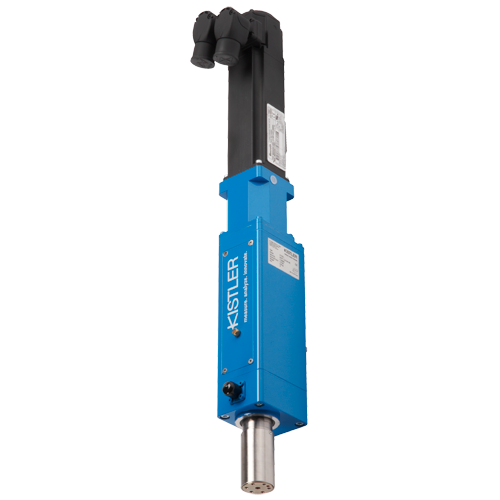
NCFT - Low force Servo Press-fit Joining System
- Extremely wide measuring range of 0.05 … 1.5 kN
- Dual range
- High-precision force measurement via telemetry
- Certified for ISO 14644-1 class 8 clean room use (7 possible)
- High velocity for very short cycle times
- High overload capacity of sensor
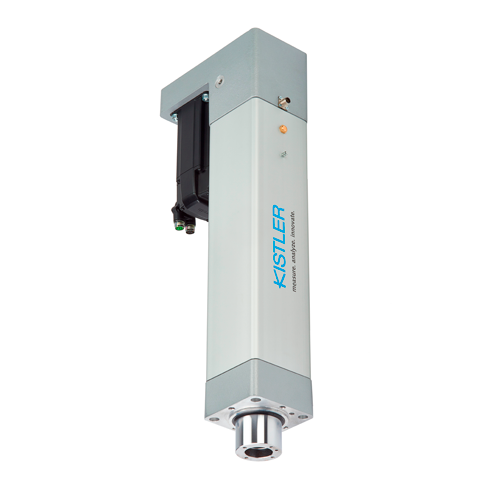
NCFE - Economy Servo Press-fit Joining System
- Measuring range 10 … 80 kN
- Cost-effective design
- Measuring direction push
- Compact dimensions
- Uniform operating philosophy using maXYmos NC

NCFN - Kistler Standard Servo Press-fit Joining System
- Measuring range 5 .. 300 kN (higher forces, and strokes available)
- Force feedback control, High velocity
- High measuring accuracy for all ranges
- Active compensation of process compression for exact positioning
- Available for compression/tension application
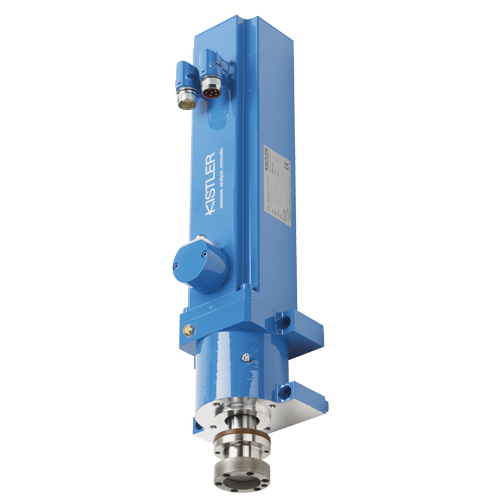
NCFH - Hollow Shaft Motor + Compact Design
• Force feedback control
• High measuring accuracy in two ranges
• High velocity
• Active compensation of process compression for exact
positioning
• No external PC with special software required
• Absolute encoder, eliminates reference point determination
• Low maintenance

NCFR - For Joining Processes with Rotational Movement
• Compact design thanks to hollow-shaft motors
• Axial forces of up to 15 kN, torque of up to 50 N·m
• Maximum dynamic thanks to cutting-edge drive
technology
• High speed of travel with up to 400 mm/s
• Absolute encoder for displacement and crank angle
• Optional torque sensor including amplifier
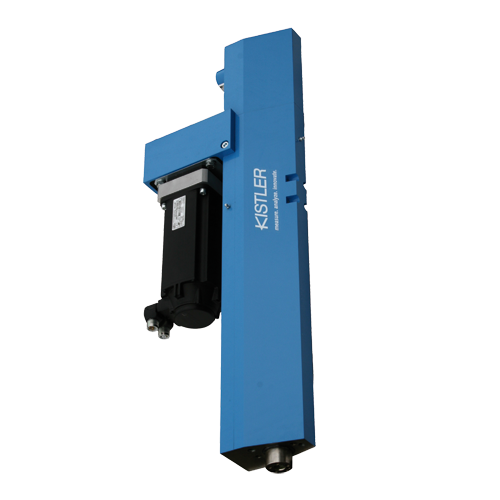
NCFS - For Joining Operations with Small Center Distances
• Force signal
• Integral charge amplifier
• High measuring accuracy in two ranges
• High speed
• High rigidity
• Precise guidance
• High level of sensor overload protection
----------------------------------------------------------------------
Choose either our Low-Cost BL Controller or our more Advanced TL Series Controller:
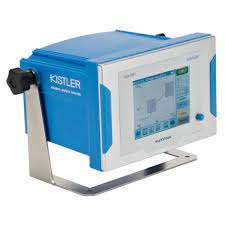
maXYmos BL Process Controller
Monitor sophisticated evaluation curves
- 16 measuring programs
- Up to 8000 XY-values per curve
- Color touchscreen
- up to 4 evaluation objects per curve
- Functionality expandable via licensing
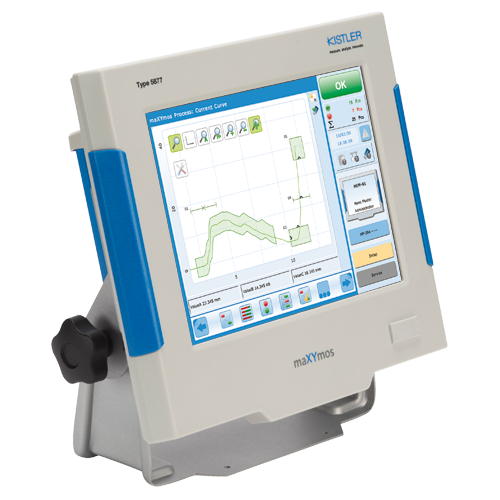
Kistler maXYmos TL Process Controller assures quality, repeatable outcomes
maXYmos TL Process Controller
Monitor sophisticated evaluation curves
- 128 Measuring programs
- Display module with 10.4? color touchscreen
- innovative Evaluation objects: ENVELOPE, GET-REF, BREAK, DELTY-Y, CALC, DIG-IN
- Sequencer Mode with 256 programmable sequence steps
Industry Applications
Automotive/EV/HEV/Mil-Aero-Defense
With the wide range of available press capacities, Kistler Servo Press-Fit Joining are the perfect solution for numerous automotive assembly and fabrication applications, including but not limited to:
- Bearing press
- Brake calipers
- Bushing press
- Cradle press
- Dowels
- Freeze plugs
- Fuel injector insertion
- Wheel studs
Electronics
A wide range of speed settings and the ability to press at rated loads for unlimited time make Servo Press-Fit Joining suited for a wide range of electronic components for manufacturing and assembly. Including but not limited to:
- Contact insertion
- IC Chip bonding
- IC lead forming
- Keypad blanking
- Lenses
- Motor housing clinching
Testing
The high force/distance accuracy and the available push-pull functionality allow Servo Press-Fit Joining to be used for many testing situations:
- Compression testing
- Connector insertion testing
- Destructive weld testing
- Fatigue testing
- Material capacity testing
- Spring durability
